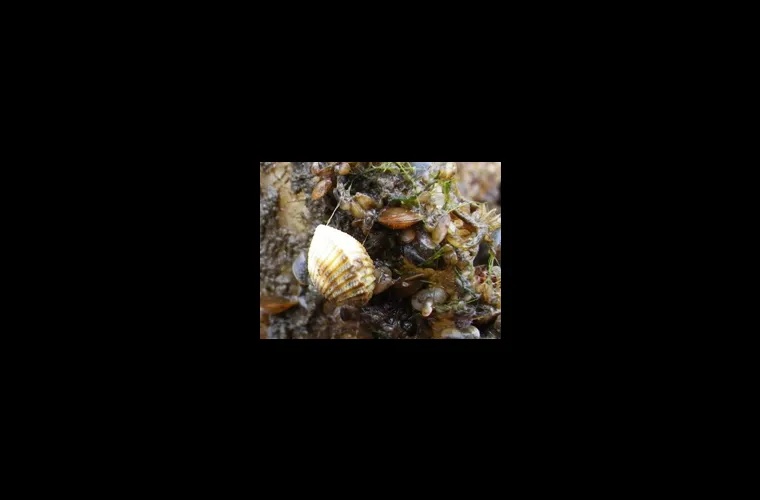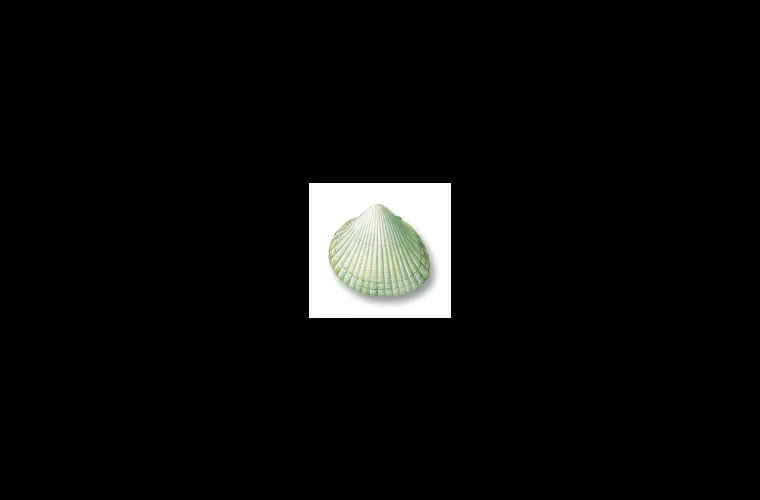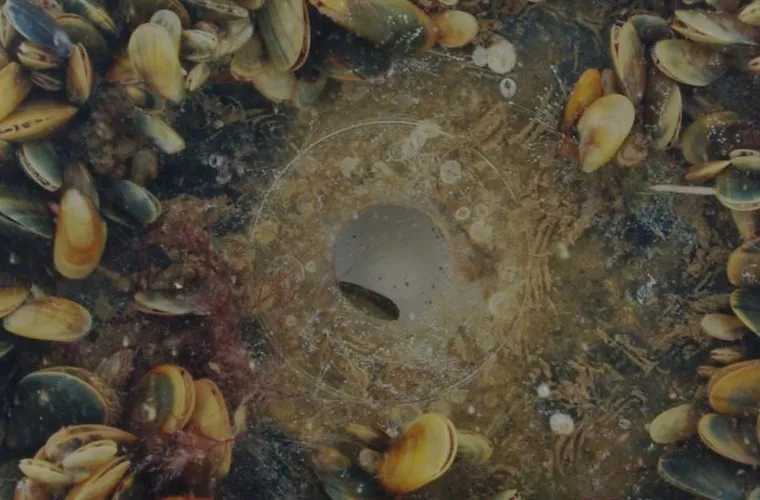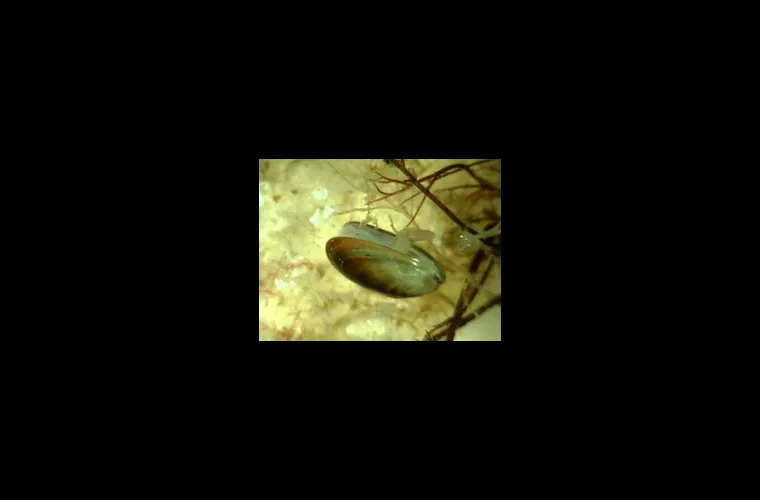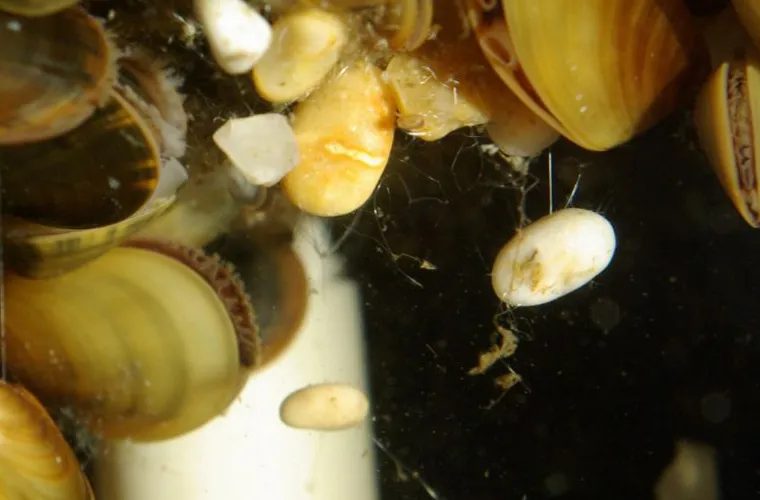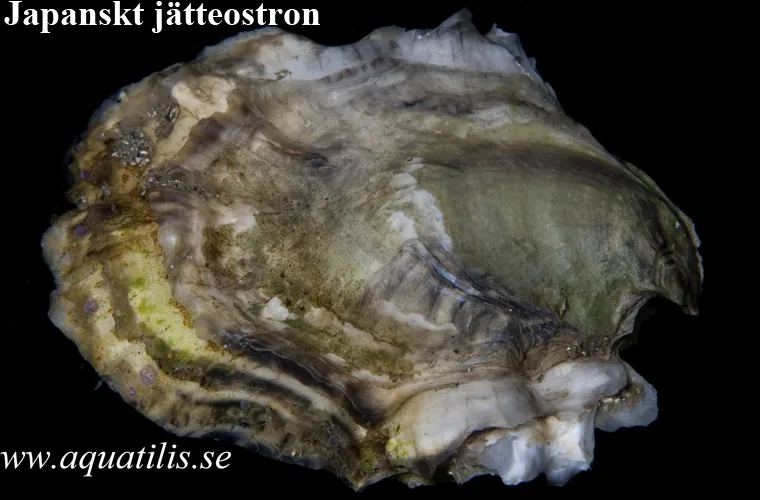Clams, mussels (Bivalvia)
Clams belong to the group molluscs (Mollusca). They have a two-piece lime shell that encloses and protects their body. The shell halves are joined at the back and can be opened and closed by a muscle. In order to get enough oxygen, clams have gills. In several species, the foot is used for movement - the mussel can then slowly crawl around. In other species, it is bent and in this case the animal may move by foot movements. There are also species in which the foot is stunted or missing, such as in oysters. In some species there may be point-like eyes.
For example, the blue mussels has a gland in the foot that can form horny wires, "byssus", allowing the mussels to adhere to the object in the water - for example a Virtue disc! Mussels are filter feeders - it sucks in water, and afterwards "food" is filtered and sent out. A blue mussel can pump out up to 8 liters of water per hour!
Most mussels have a free-living larval stage and a sessile adult stage. Their diet consists mainly of plankton. The larva, like the shells, has a sail covered with cilia, which serves as a locomotion device. As adults, they sit mainly fixed on rocks or on the seabed. Some species can move by quickly compressing their shells, which leads to water inside the mussel being pushed out into a beam that produces a reaction force.
Here is a video showing "swimming" scallops (Pecten maximus) trying to escape from sea stars (Marthasterias glacialis)
More information in Aquascope:
Blue mussel (Mytilus edulis)
Sand gaper (Mya arenaria)
Common cockle (Cerastoderma edule)






